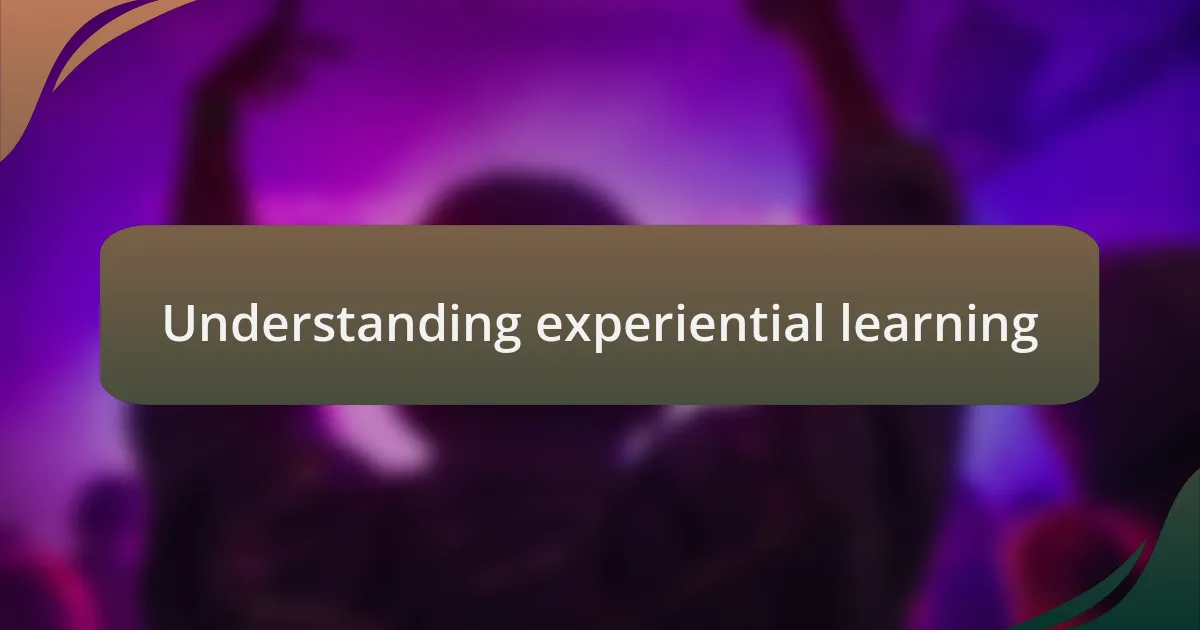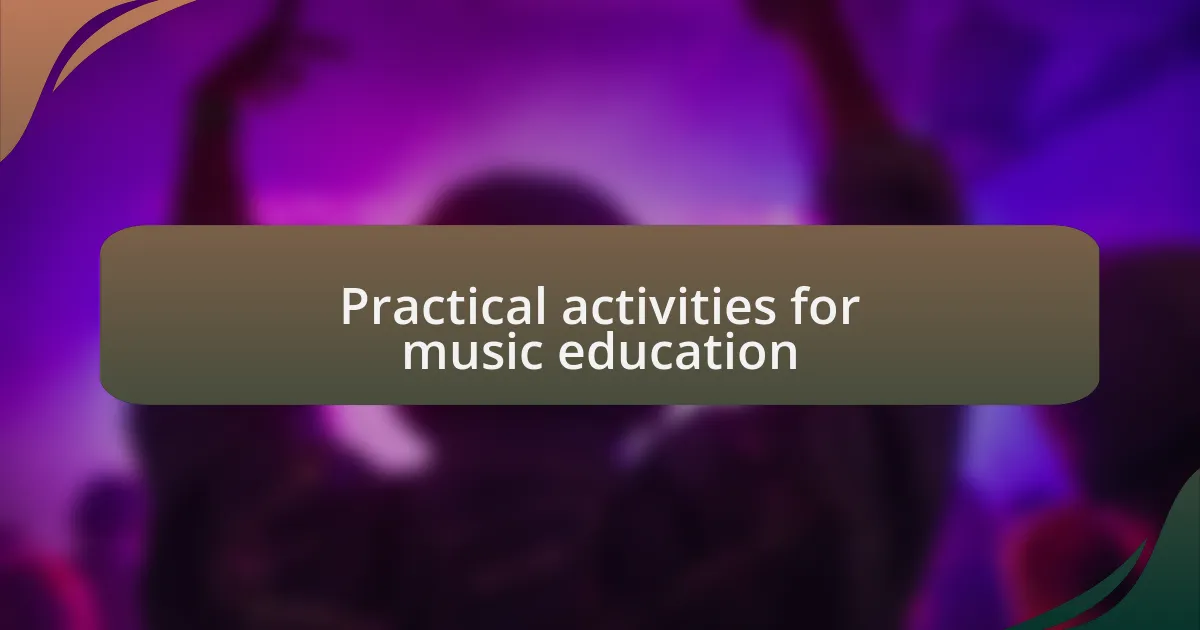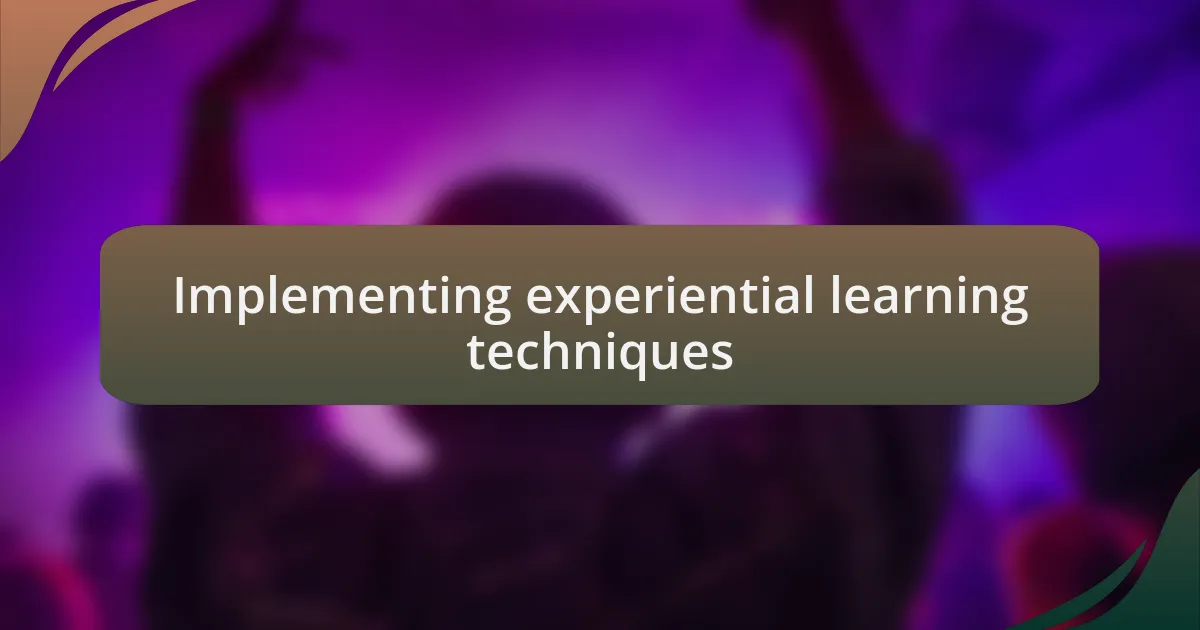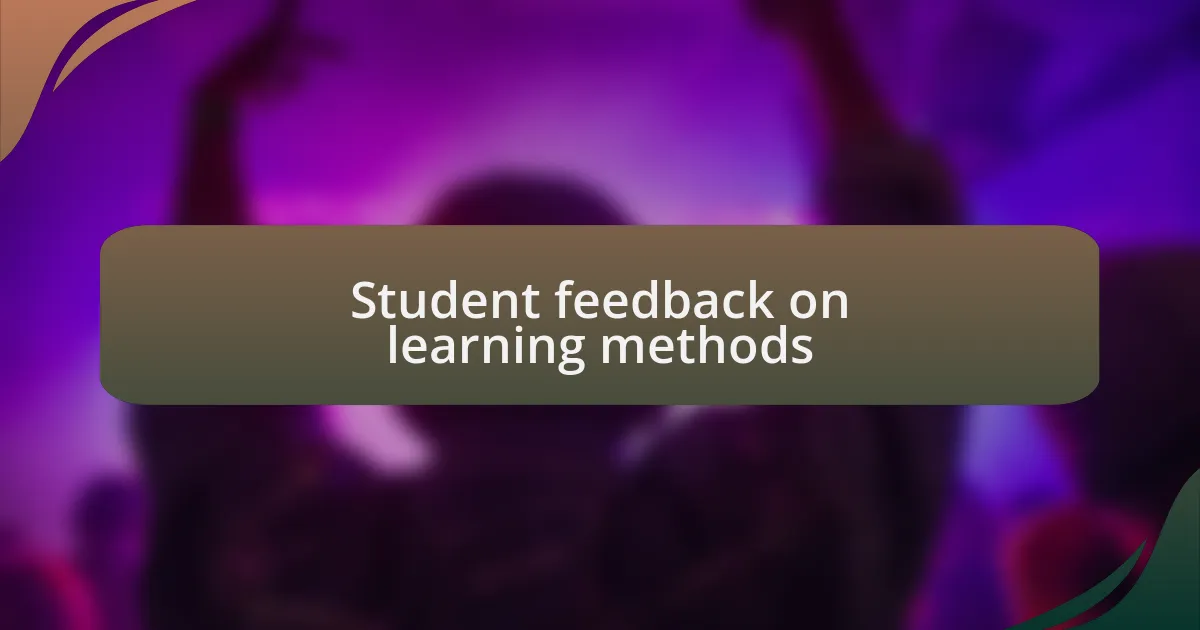Key takeaways:
- Experiential learning enhances understanding through hands-on experiences and active participation, fostering deeper connections with the material.
- Practical activities like group jam sessions and body percussion promote teamwork and engagement, making learning memorable.
- Real-world scenarios, such as organizing a mock music festival, encourage creativity and practical application of knowledge.
- Student feedback highlights the transformative impact of experiential learning, revealing newfound creativity and appreciation for collaborative learning.

Understanding experiential learning
Experiential learning is an educational approach where students gain knowledge through hands-on experiences. I often reflect on moments when I took my pupils outside the classroom; nothing compares to watching their faces light up during a live performance. It makes me wonder: how much more can they truly absorb when learning is rooted in real-world practice?
At its core, experiential learning requires active participation and reflection. I vividly remember a project where my students composed music based on their daily lives. Through their reflections, I noticed an evolution in their understanding of music and its emotional power—an insight that’s even more profound when students connect their own experiences to their work. Isn’t it incredible how the act of creating together fosters a deeper appreciation for their craft?
The framework of experiential learning emphasizes the importance of feedback and growth. During one class, I had students critique each other’s performances, which created an atmosphere of trust and collaboration. Seeing them support and learn from one another not only strengthened their musical skills but also built a community where every voice mattered. Don’t you think such an environment is essential for fostering both creativity and confidence?

Practical activities for music education
Practical activities in music education can transform a standard lesson into an unforgettable experience. I often set up group jam sessions where students collaborate to create original pieces. Watching them bounce ideas off each other and build their musical composition is a testament to the power of teamwork. Do you remember the excitement of crafting something new with friends? That same sense of discovery fuels their engagement in the classroom.
One of my favorite activities involves teaching rhythm through body percussion. I lead the class in creating a rhythm pattern using claps, stomps, and snaps. The infectious energy in the room reminds me how much students love movement and connection in learning. It never fails to amaze me how quickly they grasp complex rhythms when they can feel the music in their bodies. Isn’t it fascinating how physical engagement can unlock musical understanding?
I also incorporate technology by using apps that allow students to compose and arrange music digitally. During one session, a student created a piece that blended classical elements with modern beats, showcasing their unique style. The pride they felt when sharing their project was palpable. This experience reinforces my belief that when students express themselves creatively, they not only learn but find their own voice in music.

Implementing experiential learning techniques
When I introduce experiential learning techniques in my classes, I focus on immersion. For instance, I often take my students out into the community for live music performances. Watching their faces light up as they experience music in a new environment offers them a perspective they wouldn’t gain in a typical classroom setting. Have you ever felt the rush of hearing a live band play? It’s a feeling that resonates deeply and encourages students to connect with their musical studies in a more profound way.
Another technique I find effective is simulating real-world scenarios. Recently, I organized a mock music festival where students had to plan every aspect, from scheduling performances to marketing. The excitement was palpable as they engaged in roles that allowed them to apply their knowledge creatively. I remember the moment one student realized the importance of teamwork and logistics; their expression was a mix of determination and pride. Isn’t it rewarding to witness that “aha” moment when theory meets practice?
Lastly, I reinforce experiential learning through reflection. After each project, I create space for students to discuss what they learned and how they felt. One particularly touching moment was when a shy student shared how performing in front of peers helped them overcome their fear of public speaking. This memory reminds me that music education isn’t just about technique; it’s about nurturing personal growth and confidence. How often do we consider the emotional impact of our learning experiences?

Student feedback on learning methods
Student feedback on learning methods often reveals unexpected insights. For instance, after a recent hands-on workshop where we composed music using household objects, several students commented on how liberating the experience felt. They expressed that breaking away from traditional instruments allowed them to explore creativity freely—something they didn’t realize they were missing. Have you ever discovered a new passion by stepping outside the norm?
Another powerful feedback instance occurred after a collaborative project where students formed small bands to create original pieces. Many mentioned that having the chance to learn from their peers was invaluable. One student shared how they appreciated learning different techniques and perspectives, stating, “It’s like having a mini-masterclass every time we practice together.” This type of collaboration not only fosters musical skills but also builds camaraderie within the class.
I also remember a particularly candid reflection session where students discussed their comfort levels with various learning methods. One student remarked that while they initially resisted experiential learning, the hands-on approach ultimately led to a deeper connection with music. Their honesty reminded me of the delicate balance between comfort and growth in education. Isn’t it interesting to see how our learning pathways can shift when we embrace different methodologies?